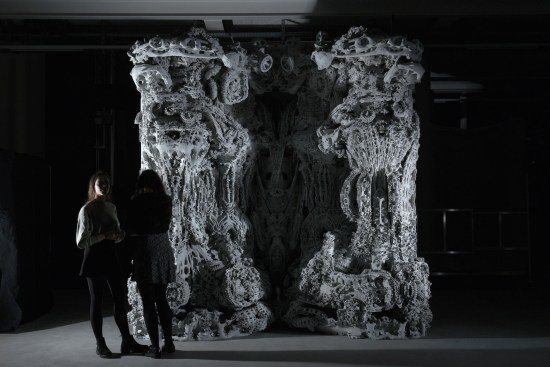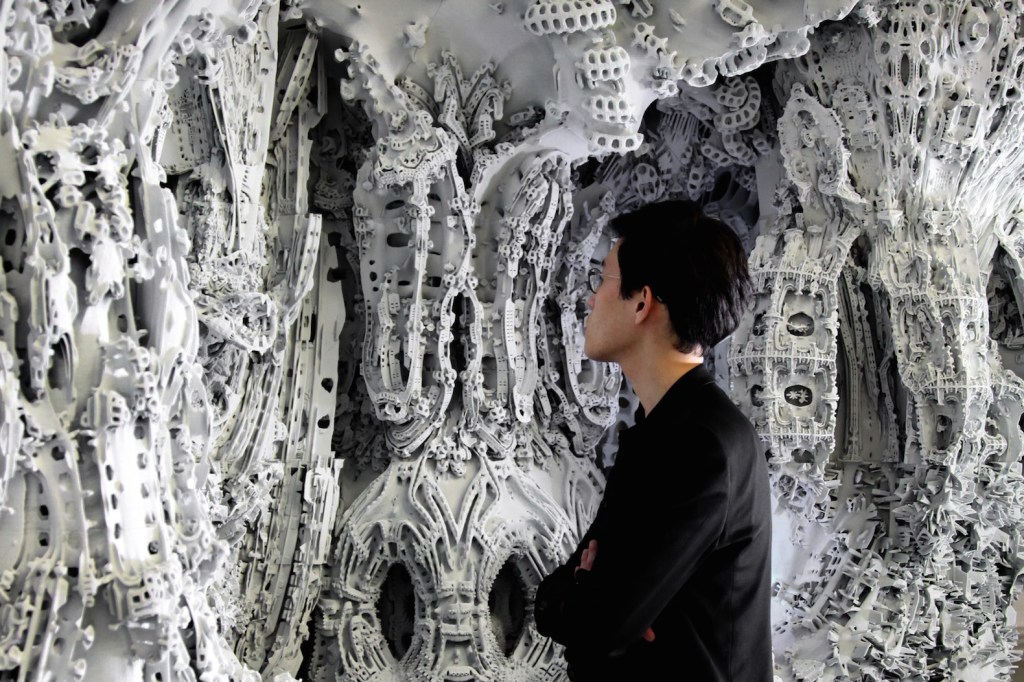While most architectural projects answer a problem of environmental or social needs, “Digital Grotesque” is founded on computation. Comprised of two iterations of 3D-printed grottoes made of sandstone, Grotto I and Grotto II, its creator, architect and programmer Michael Hansmeyer, is convinced that computational design and manufacturing can essentially change the field as we know it. Grotto II was commissioned by the Centre Pompidou in Paris and was fabricated using a sandstone 3D printer that used a subdivision-based algorithm able to create details as small as a grain of sand.
Due to its complexity, Hansmeyer and fellow programmer Benjamin Dillenburger had to use a supercomputer at ETH Zurich to process it in pieces, then take all of the images and weave them together in Photoshop. Due to its three-dimensional final shape, Hansmeyer and Dillenburger didn’t even know what the entire thing would look like until it was done printing. (And this type of risk-taking approach is how the two think that computational design could disrupt architecture.)
The resulting 7-metric-ton work is so complex it boasts 1.3 billion individual surfaces. The organic shapes recall conjoined stalactites and stalagmites that have been formed over millions of years.
For years, Hansmeyer’s complex 3D-printed designs using materials like cardboard have been amazing even the most detail-obsessed designers. In this, Grotto I was Grotto II’s predecessor in both its form and delivery. While this first edition of “Digital Grotesque” was also printed using a sandstone printer in 2013, it lacked dimension. Grotto I has only a single surface that was distorted, and the designers actually had to make more decisions regarding its shape in comparison to Grotto II. Taking this newfound control and throwing it to the wind, they sought to make Grotto II have more depth and to ask the viewer to question the many facets it displays, while taking a chance on the final product.

Michael Hansmeyer and Benjamin Dillenburger
